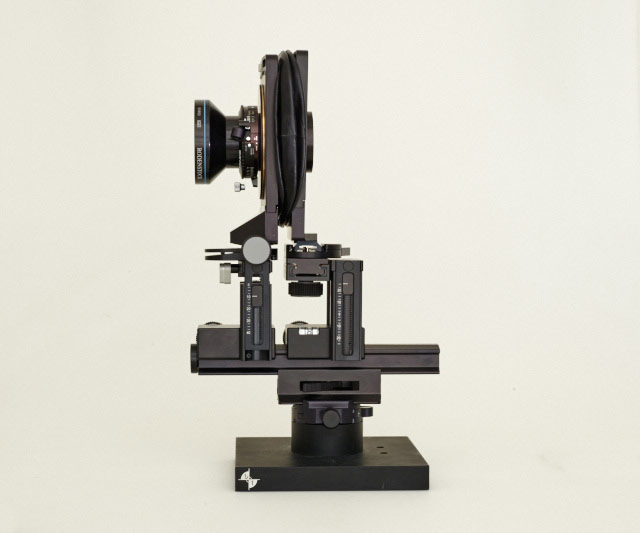Digital Transitions
Arca Swiss Universalis – 11 Reasons You’ll Love It
The Arca Swiss Univeralis isn’t your father’s view camera. It’s small, light, and agile. But, as anyone who has used an Arca Swiss product would expect, it is rock solid, precise, and perfectly aligned – up to the standards required for high resolution digital photography. There’s a lot to love in this small view camera.
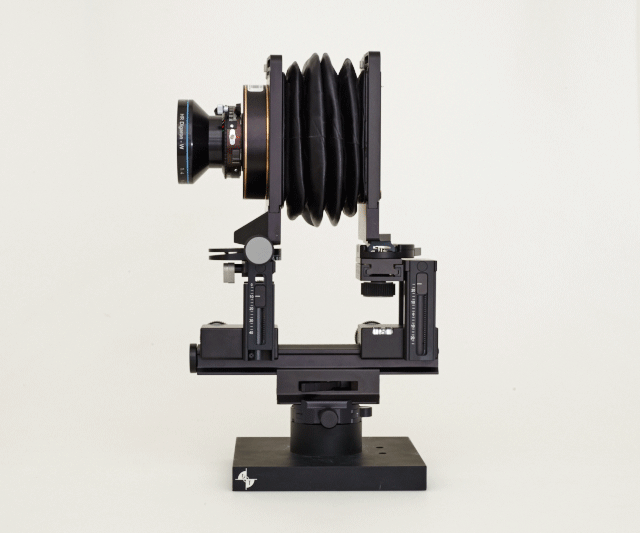
1. Scheimpflug is More Important Than Ever
With higher resolution comes a higher level of scrutiny of the focus and detail. Especially for still life and product shooters, this means an uphill battle against depth of field. Judicious use of tilt and swing can make the difference between the entire subject being in focus in a single shot, and having to resort to time consuming and error-prone techniques like focus stacking.
The Univeralis offers swings and tilts galore. Moreover, the tilt movement is centered on the optical center, so adding tilt holds the framing and focus steady, only altering the shape of the depth of field!
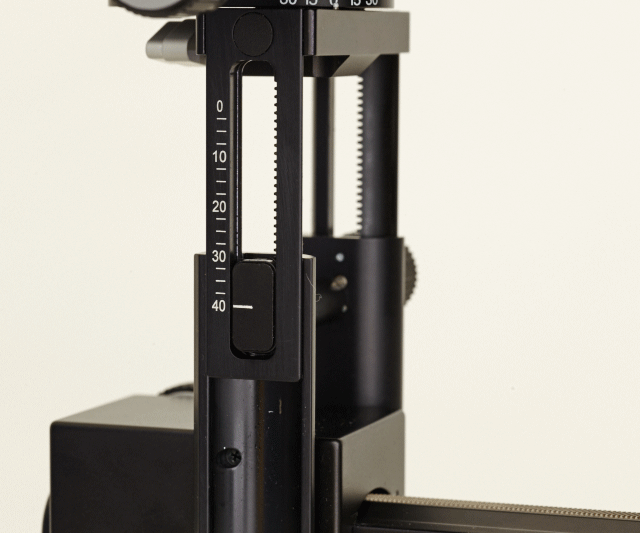
2. Precise Movements, Rigid Alignment
All tolerances on a view camera are dependent on the length of the lens and the size of the sensor or film being used. In the old days, with an 8×10 camera and a 450mm lens, even a full inch of “slop” on the focus or standard was acceptable. With an 80mp 645 sensor and a moderate wide-angle even a mm of slop is unacceptable.
The Univeralis is designed specifically for digital, with all movement, gearing, and alignment made to tolerances that can handle the highest resolution modern digital backs.
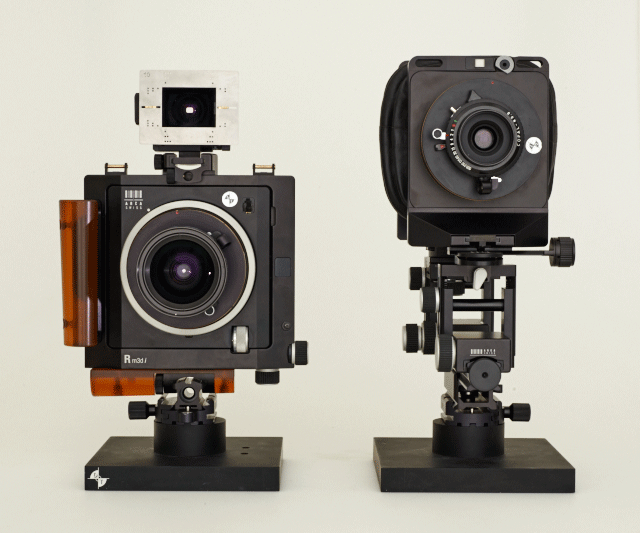
3. Compatibility with the RM3Di
The optional R-Mount lens board for the Univeralis natively accepts lenses mounted for the RM3Di. This means owners of an RM3Di and Univeralis can share lenses between their RM3Di (for landscapes, architecture, interior) and their Univeralis (for table top, macro, special effects).
With appropriate spacer you can even use the RM3Di as a replacement front standard for the Univeralis. This allows use of the ultra-precise helical focusing ring on a view camera with plenty of bellows – a macro shooters dream!
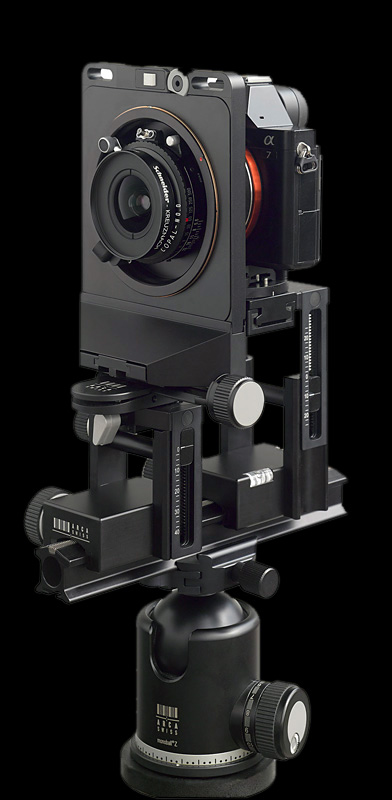
4. Compatibility with MF SLRs and Small Format Cameras
The Univeralis DB standard accepts all Arca Swiss digital back mount adapters. That means it can share digital backs with the Phase One DF/DF+, Hasselblad H1/H2/H4X/H5X, Hasselblad 500 series, or Contax SLR bodies.
In addition, as a modular system the Univeralis will accept 35mm SLR bodies such as the Sony A7R. A quick release makes swapping standards a cinch.
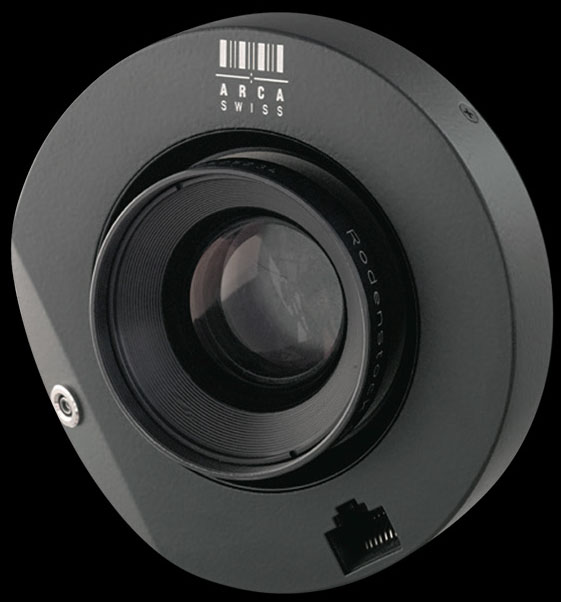
6. Electronic Lenses and Focal Plane Shutter
Arca is soon to release a new set of electronic shutters, both designed and made by Arca Swiss. These electronic shutters will have less cables, hassles, and limits compared to current electronic view camera shutter systems. For those that prefer the classic cocking mechanism and a beautiful whirr of a fully mechanical shutter – it’s compatible with those as well!
The upcoming Focal Plane Shutter is also fully compatible with the Arca Swiss Univeralis, allowing lenses without shutters such as classic brass lenses. For photographers with many lenses to adapt this also reduces the cost-of-entry – as you only need one focal plane shutter for any number of lenses.

7. Focus Rail Sled
The soon to be released focus sled gives a real time indication of focus distance and depth of field range. Rather than relying on squinting eyes toward the rail to return to a particular focus distance or needing a back with live view or a high-res LCD, you can use this system to easily focus at a specific distance with great precision. The wireless remote control provides this information without cables, which is good for when the camera is mounted unusually high or low, or backed into a corner.

8. Focus Mask
This tool provides immediate assessment of the plane of focus in an image. By watching subtle changes in the Focus Mask it is easy to fine tune the placement of swing or tilt. With any camera that can tether to Capture One Pro the focus mask is available on the computer monitor. When using with a Phase One IQ or IQ2 digital back, the focus mask is also available directly on the digital back LCD.
9. On LCD or Wireless Live View
When using a Phase One IQ or IQ2 back live view is available on the digital back LCD. For rough compositional changes and individual assessment this places live view closest to where you actually need it – right next to where you are making the relevant adjustments. On the IQ250 this is also available wirelessly via an iPad, iPhone, or iPod Touch, which can then use AirDisplay to re-project the Live View (and captured images) on a TV using AirPlay – all without cables.
10. Price
Depending on configuration a Univeralis kit can be around $4,500 depending on the configuration, or even less for someone who already owns an RL3Di, RM3Di or Factum. For a system as flexible, precise, powerful, broadly inter-compatible, and well-made as this we think that’s a bargain.
11. Size
The Univeralis is shockingly small and light. If you’re used to legacy view cameras like a 4×5 Sinar be careful when you pick it up – you might accidentally throw it into the air. With the rail, both standards, and a digital back adapter plate it’s just a hair over 4 pounds. As a reference point the RM3Di is just a few ounces less.

